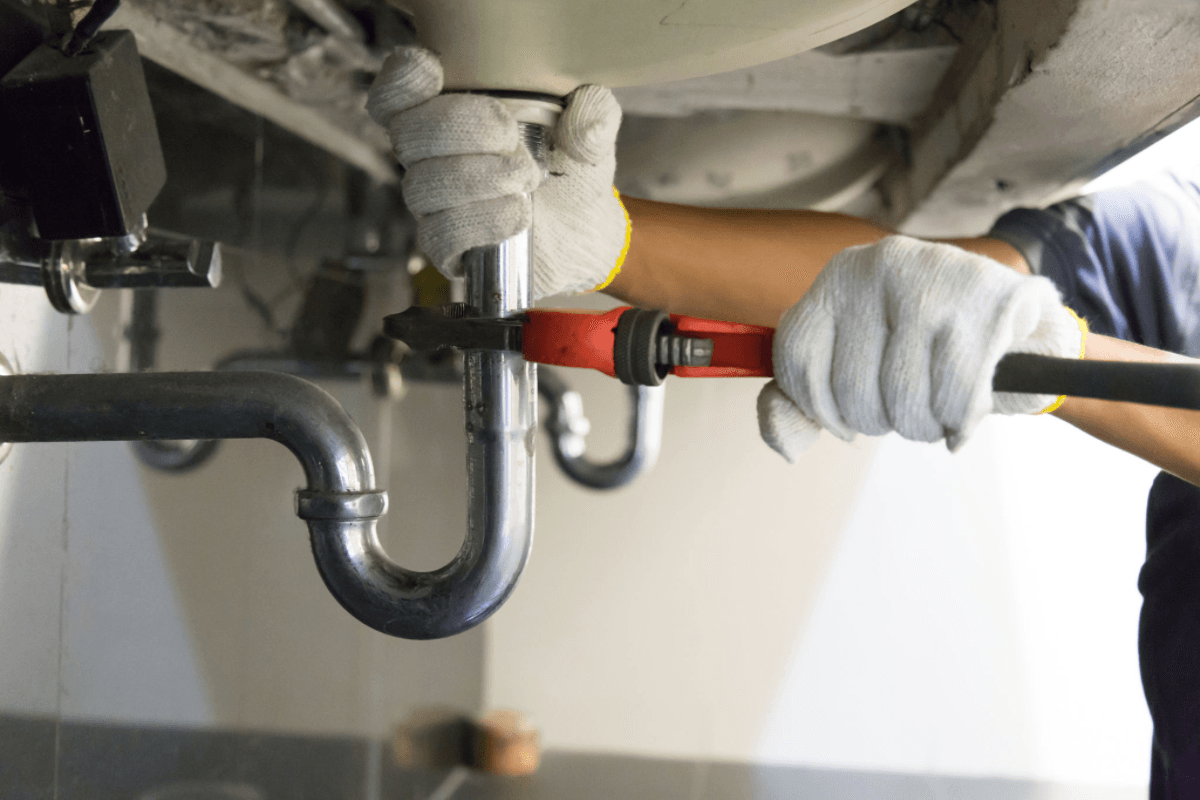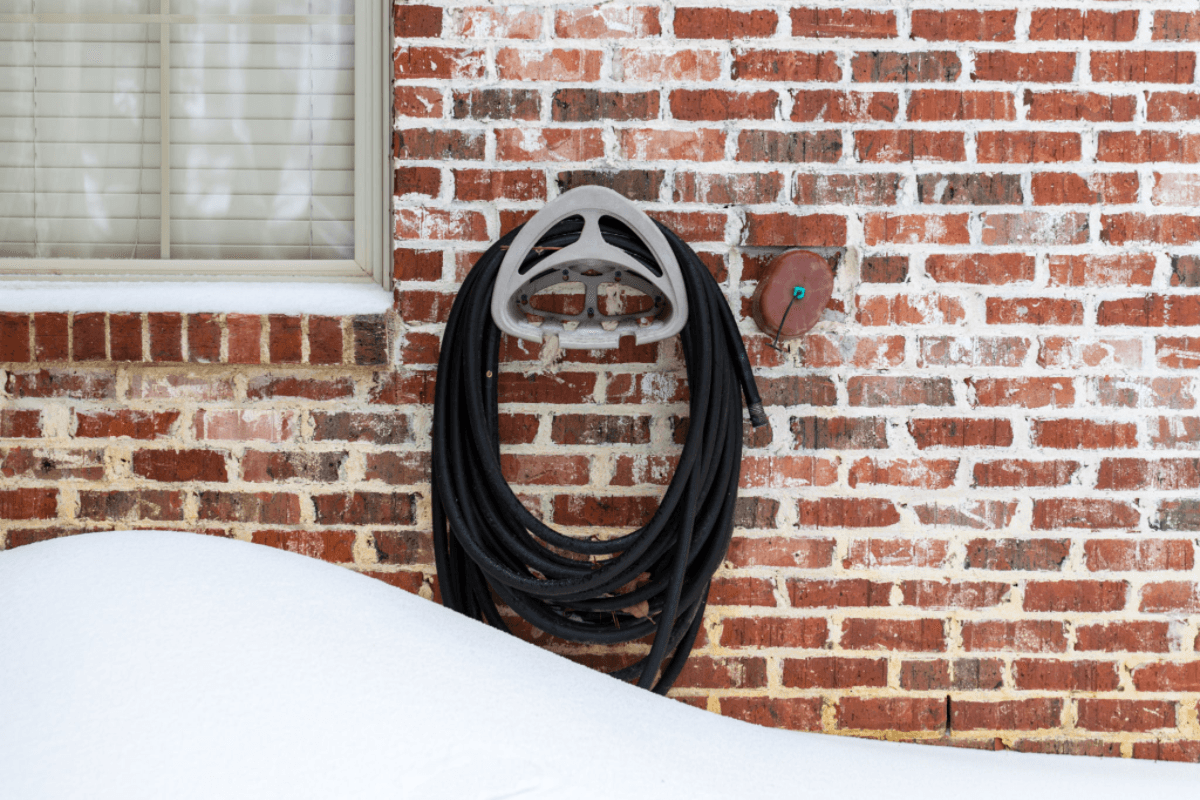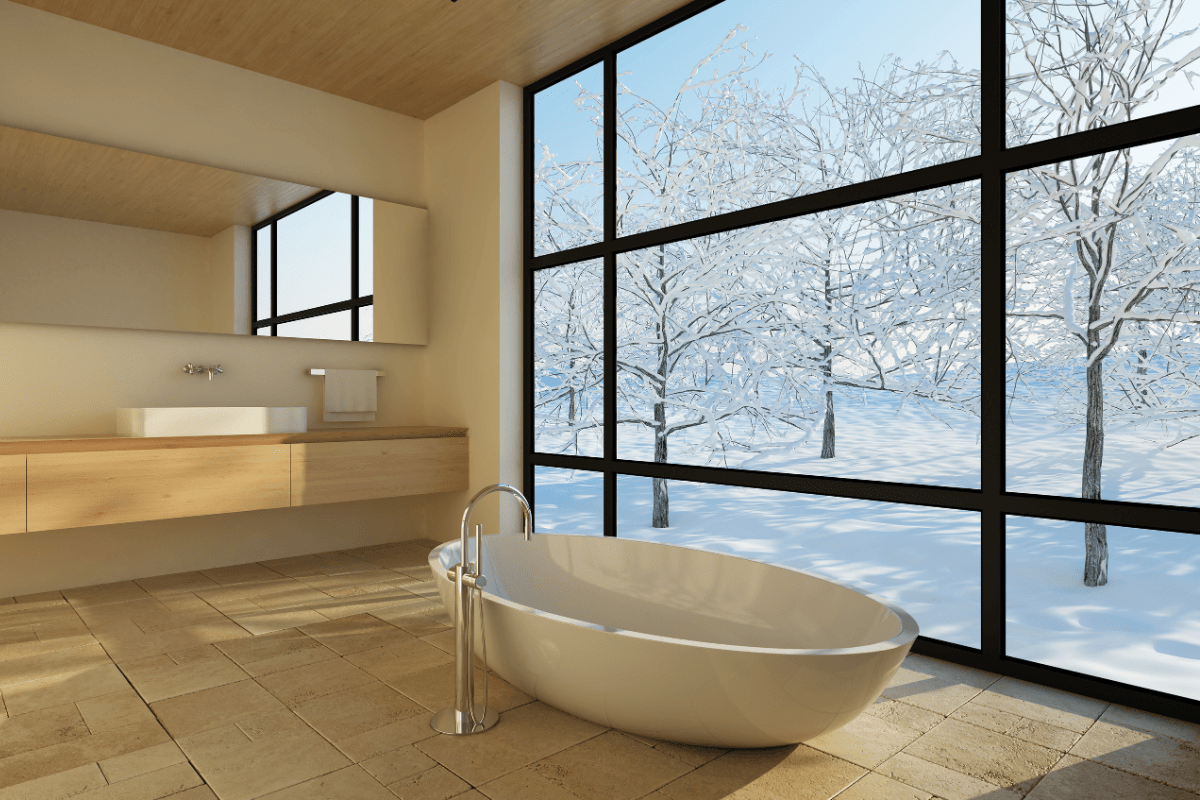As the winter chill sets in, homeowners brace themselves for the challenges that come with plummeting temperatures. Among the vulnerabilities that demand attention, your plumbing system stands as a crucial focal point. Winter weather can wreak havoc on pipes, leading to frozen lines, leaks, and potential water damage. To ensure your home emerges unscathed from the frosty season, it’s paramount to embark on a proactive journey of preparing your plumbing for winter.
At the forefront of safeguarding homes against winter plumbing woes is Service by Scott, a trusted and family-owned plumbing and maintenance company based in Woodville, Texas. With over three decades of dedicated service to Tyler County and neighboring areas, Service by Scott brings a wealth of experience and expertise to the table. This company is not merely a service provider; it’s a pillar of reliability, ensuring that no plumbing job is too small or too large. Fully licensed and committed to excellence, Service by Scott stands as a beacon of assurance for homeowners and businesses alike, offering a range of services from detecting and repairing slab leaks to comprehensive plumbing installations and repairs.
In this comprehensive guide, we’ll walk you through the essential steps of preparing your plumbing for winter, drawing on the insights and expertise that Service by Scott has honed over its long-standing commitment to customer satisfaction. Join us as we delve into practical tips and industry wisdom to fortify your plumbing system against the winter’s icy grip.
Insulating Exposed Pipes
As winter’s icy fingers reach for your home, the vulnerability of exposed pipes becomes a critical concern. Without proper insulation, these pipes are at risk of freezing, leading to potential cracks and water damage. Effective insulation is foundational in fortifying your plumbing against the winter chill.
Identifying Vulnerable Areas
Before delving into the insulation process, it’s essential to identify the vulnerable areas in your plumbing system. Exposed pipes in basements, crawl spaces, and exterior walls are particularly susceptible to freezing. Conduct a thorough inspection of your plumbing layout, noting any areas where pipes are exposed to the elements.
Types of Insulation Materials
Selecting the right insulation material is crucial for effective protection against winter’s bite. Different materials offer varying levels of insulation; options like foam pipe sleeves, fiberglass, or electric heating cables are recommended, depending on the specific needs of your plumbing system. These materials provide a reliable shield against the cold, helping to prevent freezing and potential damage.
DIY Insulation Techniques
For homeowners eager to take a hands-on approach, there are several insulation techniques to shield exposed pipes. Wrapping pipes with insulation sleeves, using heat tape, and applying pipe wrap are common methods. These DIY approaches empower homeowners to take proactive measures in winterizing their pipes effectively, ensuring a more resilient plumbing system when the temperatures drop.
When to Seek Professional Assistance
While some homeowners may opt for a DIY approach, certain situations call for the expertise of professionals. Service by Scott emphasizes the importance of seeking professional assistance for extensive insulation needs, intricate plumbing layouts, or if you’re unsure about the most suitable insulation materials. Our team is equipped to handle all aspects of pipe insulation, ensuring your plumbing system is winter-ready and resilient against the cold.

Sealing Leaks and Cracks
As winter descends, the integrity of your plumbing system becomes paramount, and addressing leaks and cracks is a crucial step in fortifying your home against the cold. Even minor leaks can escalate into major issues when temperatures drop, leading to water damage and increased utility bills. In this section, we’ll delve into the importance of identifying and sealing leaks and cracks, ensuring your plumbing remains resilient in the face of winter’s challenges.
Identifying Common Areas Prone to Leaks
Understanding where leaks are likely to occur is the first step in proactive winter plumbing maintenance. Common areas prone to leaks include around pipe joints, near fixtures, and in areas where pipes are exposed to colder temperatures. A meticulous inspection by homeowners or professionals from Service by Scott can pinpoint these vulnerable spots, preventing potential issues before winter sets in.
Importance of Addressing Leaks Before Winter
The urgency of addressing leaks before winter cannot be overstated. Water expands when it freezes, and even a small leak can lead to significant problems once temperatures drop. Sealing leaks promptly not only protects your home from water damage but also contributes to energy efficiency by preventing heat loss. Service by Scott advocates for proactive leak detection and repair, emphasizing that a small investment in repairs can save homeowners from more extensive and costly issues down the line.
DIY Methods for Sealing Small Leaks
For homeowners keen on taking immediate action, there are effective do-it-yourself (DIY) methods for sealing small leaks. Utilizing pipe sealants, epoxy putty, or waterproof tape can provide temporary solutions to minor leaks. However, it’s crucial to note that DIY fixes may not be a permanent solution, and professional assessment is recommended for comprehensive leak repairs.
Hiring a Professional for Extensive Repairs
While DIY methods are suitable for minor leaks, extensive repairs are best left in the hands of professionals. Service by Scott’s experienced technicians are equipped to handle comprehensive leak assessments and repairs, ensuring that the integrity of your plumbing system is restored to withstand the challenges of winter. Professional assistance guarantees a thorough examination of your plumbing infrastructure, identifying hidden leaks and potential vulnerabilities that may go unnoticed without expert scrutiny.

Protecting Outdoor Fixtures
As winter descends upon your home, it’s not just the indoor plumbing that requires attention—outdoor fixtures are equally susceptible to the harsh elements. Garden hoses, outdoor faucets, and associated plumbing infrastructure face the risk of freezing, potentially leading to significant damage. In this section, we’ll explore the essential steps to safeguarding your outdoor fixtures, ensuring they withstand the winter chill unscathed.
Winterizing Garden Hoses and Outdoor Faucets
Before the first frost, it’s crucial to winterize your garden hoses and outdoor faucets. Start by disconnecting and draining hoses, ensuring no residual water is left inside. Storing hoses indoors or in a shed protects them from the elements and prolongs their lifespan. Outdoor faucets should be turned off from the inside shut-off valve, allowing any remaining water to drain out. Adding insulation covers to outdoor faucets provides an extra layer of protection against freezing temperatures.
Using Insulated Covers for Exterior Faucets
Insulated covers are a valuable investment in protecting your outdoor faucets. These covers, made from materials like foam or rubber, wrap around the faucet to provide insulation against the cold. Easy to install and remove, insulated covers act as a barrier, preventing the outdoor faucet from freezing during the winter months. Service by Scott recommends these covers as a cost-effective and practical solution for homeowners looking to fortify their outdoor plumbing.
Storing Outdoor Plumbing Tools Securely
Your outdoor plumbing tools, such as hose nozzles and sprinklers, should be stored securely to prevent damage from freezing temperatures. Emptying water from these tools and storing them in a dry, sheltered location ensures they remain in good condition for the next season. Service by Scott advises homeowners to conduct a thorough inventory of outdoor plumbing accessories, replacing any damaged items to guarantee optimal functionality when spring arrives.
Ensuring Proper Drainage Around Outdoor Fixtures
Effective drainage is a key element in protecting outdoor fixtures from winter-related damage. Check the grading around your home to ensure water drains away from outdoor faucets and fixtures. Service by Scott’s experts emphasizes the importance of maintaining proper drainage and preventing water accumulation that could lead to freezing and potential damage. Regularly inspecting the area and addressing any drainage issues contributes to the overall resilience of your outdoor plumbing.
Servicing Your Water Heater
Amidst the winter preparations for your home, one aspect that demands particular attention is your water heater. A well-maintained water heater not only ensures a reliable supply of hot water during the colder months but also contributes to energy efficiency. In this section, we’ll delve into the essential steps of servicing your water heater, providing insights into maintenance practices that will keep this vital appliance functioning optimally throughout the winter.
Checking for Sediment Buildup in the Tank
Over time, sediment buildup in your water heater tank can hinder its efficiency, leading to increased energy consumption and potential damage. As part of your winterization routine, it’s crucial to check for sediment accumulation. This involves draining a small amount of water from the tank to flush out sediment. Service by Scott recommends this as a proactive measure to maintain the longevity of your water heater and ensure it operates at peak performance during the colder months.
Testing the Pressure Relief Valve
The pressure relief valve is a critical safety component of your water heater, preventing excessive pressure from building up inside the tank. As part of your winter servicing, test the pressure relief valve to ensure it functions correctly. Simply lift and lower the valve’s lever to allow a small amount of water to be released. If the valve does not operate smoothly, or if water continues to leak afterward, it may need replacement. Service by Scott’s experts are equipped to handle such evaluations, ensuring the safety and reliability of your water heater.
Adjusting the Temperature for Winter Efficiency
As the temperature drops, adjusting your water heater’s temperature setting becomes a practical measure. Lowering the temperature during winter not only conserves energy but also helps prevent scalding accidents, especially in households with children. Finding the optimal balance between warmth and safety is key. Service by Scott recommends a temperature setting of around 120 degrees Fahrenheit during winter, promoting energy efficiency without compromising your comfort.
Scheduling Professional Water Heater Maintenance
While some water heater maintenance tasks can be performed by homeowners, scheduling periodic professional maintenance is essential for the longevity and efficiency of the appliance. Service by Scott offers comprehensive water heater maintenance services, including thorough inspections, sediment flushing, and component checks. Professional assessment not only addresses immediate concerns but also identifies potential issues before they escalate, ensuring your water heater is winter-ready and operating at its best.
Preventing Frozen Pipes
As winter takes hold, the specter of frozen pipes looms, posing a significant threat to your plumbing system. When water within pipes freezes, it expands, potentially causing pipes to burst and resulting in extensive damage. Preventing frozen pipes is a proactive endeavor that safeguards your home against these winter plumbing nightmares. In this section, we’ll explore effective strategies to ward off the chill and ensure your pipes remain intact throughout the coldest months.
Recognizing Signs of Potential Pipe Freezing
The first step in preventing frozen pipes is to be vigilant for signs that indicate the potential for freezing. Unusual sounds, such as banging or clanking in the walls, reduced water flow from faucets, or visible frost on exposed pipes are red flags. Service by Scott advises homeowners to be attuned to these warning signs and take immediate action to prevent pipes from freezing. Recognizing these indicators early can save you from the inconvenience and expense of dealing with burst pipes.
Keeping Interior Temperatures Consistent
Maintaining a consistent interior temperature is fundamental to preventing pipes from freezing. Set your thermostat to a stable temperature, especially during nighttime hours when temperatures typically drop. Even a slight increase in temperature can make a significant difference in preventing freezing. Service by Scott recommends keeping your home adequately heated and insulating vulnerable areas, such as basements and crawl spaces, to create a uniform climate throughout your living space.
Using Heat Tape or Cables for Added Protection
For pipes in particularly vulnerable areas, such as those along exterior walls or in unheated spaces, adding an extra layer of protection is advisable. Heat tape or cables can be wrapped around pipes, providing a source of warmth to prevent freezing.
Opening Cabinet Doors to Allow Warm Air Circulation
In areas where plumbing is located within cabinets, such as under sinks, allowing warm air circulation is a simple yet effective preventive measure. Keep cabinet doors open to permit the flow of heated air, especially in kitchens and bathrooms. This practice helps maintain a warmer environment around pipes, reducing the likelihood of freezing. Service by Scott encourages homeowners to incorporate this habit into their winter routine, fostering an additional layer of protection for their plumbing.
Preventing frozen pipes requires a combination of vigilance, insulation, and strategic heating. By staying proactive and implementing these preventive measures, you can fortify your plumbing system against the winter cold and ensure a smooth transition through the coldest months of the year.

Maintaining a Consistent Indoor Temperature
As winter settles in, maintaining a consistent indoor temperature becomes not only a matter of comfort but also a crucial element in safeguarding your home’s plumbing. Fluctuations in temperature can lead to frozen pipes and other plumbing issues, making it imperative to establish a stable and warm environment throughout your living space. In this section, we’ll explore the strategies and practices that ensure a consistent indoor temperature, providing a robust defense against the potential challenges of winter.
Programming Your Thermostat for Winter
A programmable thermostat is a powerful tool in the battle against temperature fluctuations. During winter, it’s recommended to program your thermostat to maintain a slightly warmer temperature when you’re at home and active, and a slightly lower temperature when you’re away or sleeping. This not only enhances energy efficiency but also contributes to preventing sudden temperature drops that could lead to frozen pipes.
Addressing Drafts and Insulation Issues
Drafts and insulation gaps can compromise your efforts to maintain a consistent indoor temperature. Inspect windows and doors for any drafts, sealing gaps with weather stripping or caulking. Ensure that your home is adequately insulated, especially in areas prone to temperature variations, such as attics and basements. Professionals can conduct thorough home assessments, identifying and addressing insulation issues that may contribute to temperature inconsistencies and potential plumbing problems.
Utilizing Smart Home Technology for Temperature Control
The advent of smart home technology offers advanced solutions for maintaining a consistent indoor temperature. Smart thermostats, connected to your home’s Wi-Fi, allow remote temperature control through mobile devices. This feature is particularly beneficial when you’re away from home, enabling you to adjust the temperature to prevent freezing pipes or excessive energy consumption.
Importance of Periodic HVAC System Checks
Your HVAC (Heating, Ventilation, and Air Conditioning) system plays a pivotal role in maintaining a consistent indoor temperature. Periodic checks and maintenance are essential to ensure that the system operates efficiently during winter. Regular maintenance not only promotes a comfortable living environment but also reduces the risk of unexpected temperature fluctuations that could impact your plumbing.
Maintaining a consistent indoor temperature is a proactive strategy to protect your plumbing system from the challenges of winter. By implementing these practices and leveraging technology, homeowners can create a warm and stable environment, reducing the likelihood of frozen pipes and other weather-related plumbing issues.
Emergency Shut-Off Procedures
In the event of a plumbing emergency, the ability to swiftly and decisively shut off your water supply is paramount. Whether facing a burst pipe, a significant leak, or another plumbing crisis, understanding and implementing emergency shut-off procedures can minimize damage and prevent further complications. In this section, we’ll explore the essential steps to take during a plumbing emergency, highlighting the importance of locating and utilizing the main shut-off valve.
Locating and Testing the Main Shut-Off Valve
The first and most crucial step in emergency shut-off procedures is identifying the location of the main shut-off valve. Typically, this valve is located near where the water line enters your home. It may be in a basement, utility room, or near the water heater. Familiarize yourself with its location before an emergency arises. Once located, periodically test the main shut-off valve to ensure it operates smoothly. Service by Scott recommends a regular check to confirm that the valve can be easily turned, guaranteeing its effectiveness during a plumbing crisis.
Knowing When to Shut Off Water During Emergencies
Understanding when to shut off the water is equally vital. In the event of a burst pipe, excessive leak, or any situation where water is uncontrollably flowing, immediate action is required. Shutting off the water supply at the main valve can prevent further water damage and give you the necessary time to assess the situation or await professional assistance. Service by Scott emphasizes the importance of decisive action, urging homeowners to err on the side of caution and shut off the water promptly in emergency scenarios.
Communicating Emergency Procedures to Household Members
Emergency shut-off procedures are most effective when every member of your household is familiar with them. Take the time to communicate and practice these procedures with your family. Ensure that everyone knows the location of the main shut-off valve, understands when it should be used, and can confidently perform the shut-off process.
Having a Professional Inspect and Label Shut-Off Valves
While homeowners can perform basic shut-off procedures, having a professional inspect and label shut-off valves adds an extra layer of preparedness. Service by Scott’s plumbing experts conduct thorough inspections, ensuring that all shut-off valves are in good working condition. Additionally, proper labeling ensures that anyone, including service professionals or emergency responders, can quickly identify and utilize the necessary shut-off points. This step contributes to a more efficient response during critical plumbing situations.
Emergency shut-off procedures are a crucial aspect of home maintenance, providing a first line of defense against potential water damage. By understanding the location of the main shut-off valve, knowing when to use it, communicating procedures within your household, and seeking professional inspections, homeowners can confidently navigate plumbing emergencies and mitigate the impact of unexpected incidents.

Conclusion
As winter’s icy grip tightens, preparing your plumbing becomes a mission of safeguarding your home against potential challenges. In this comprehensive guide, we’ve explored crucial steps to fortify your plumbing system, from insulating exposed pipes to preventing frozen lines and maintaining a consistent indoor temperature. Each strategy contributes to a resilient home, ready to face the winter months head-on.
Remember, a proactive approach to winter plumbing maintenance not only ensures a comfortable living environment but also safeguards your property from the costly consequences of plumbing issues. By identifying vulnerable areas, addressing leaks, and implementing preventive measures, you’re taking crucial steps to protect your home.
As you embark on your winterization journey, consider the expertise and reliability that Service by Scott brings to the table. With over 30 years of dedicated service to Woodville, Texas, and surrounding areas, we stand as a family-owned and operated plumbing and maintenance company committed to excellence. No plumbing job is too small or too large for us, and we are fully licensed to handle all your plumbing needs.
For personalized assistance, thorough inspections, and expert guidance tailored to your home, contact Service by Scott today. Let us be your trusted partner in ensuring a winter-ready plumbing system that can withstand the chill. Don’t wait for plumbing issues to escalate—take action now and enjoy a season of warmth, comfort, and peace of mind. Contact Service by Scott, your reliable partner in plumbing excellence.
FAQs
How can I tell if my pipes are frozen?
Frozen pipes often exhibit warning signs such as reduced water flow, strange noises, or visible frost on exposed pipes. If you suspect freezing, turn on the faucets. If water trickles or doesn’t flow, your pipes may be frozen.
Do I need professional help for winterizing my plumbing?
While some tasks like insulating exposed pipes can be DIY, seeking professional assistance ensures a comprehensive approach. Professionals, like Service by Scott, can assess your specific needs, address potential vulnerabilities, and provide tailored solutions.
Are there specific signs my water heater needs servicing before winter?
Signs of a water heater in need of service include unusual noises, inconsistent water temperature, or rusty water. Schedule professional maintenance to address these issues and ensure your water heater operates efficiently during winter.
Can I use space heaters to prevent frozen pipes?
While space heaters can provide temporary warmth in specific areas, they are not a comprehensive solution. Insulating pipes, maintaining consistent indoor temperatures, and utilizing heating tapes are more effective measures recommended at Service by Scott.
What should I do if I discover a leak during winter?
Act promptly by shutting off the main water supply using the shut-off valve. Mop up excess water, and if possible, contain the leak with towels or buckets. Contact a professional, like Service by Scott, for a thorough inspection and lasting repairs.

